A thatcher's life: The ladders, the smell of the straw and the joy of creating a roof 'from something that resembles a bad hair day'
Once a poor man’s shelter, now a chocolate-box status symbol, thatched cottages are topped with straw and sedge, reed and heather: local materials laid by local men. Nick Hammond goes up in the world to find out more; photographs by Joe Bailey.
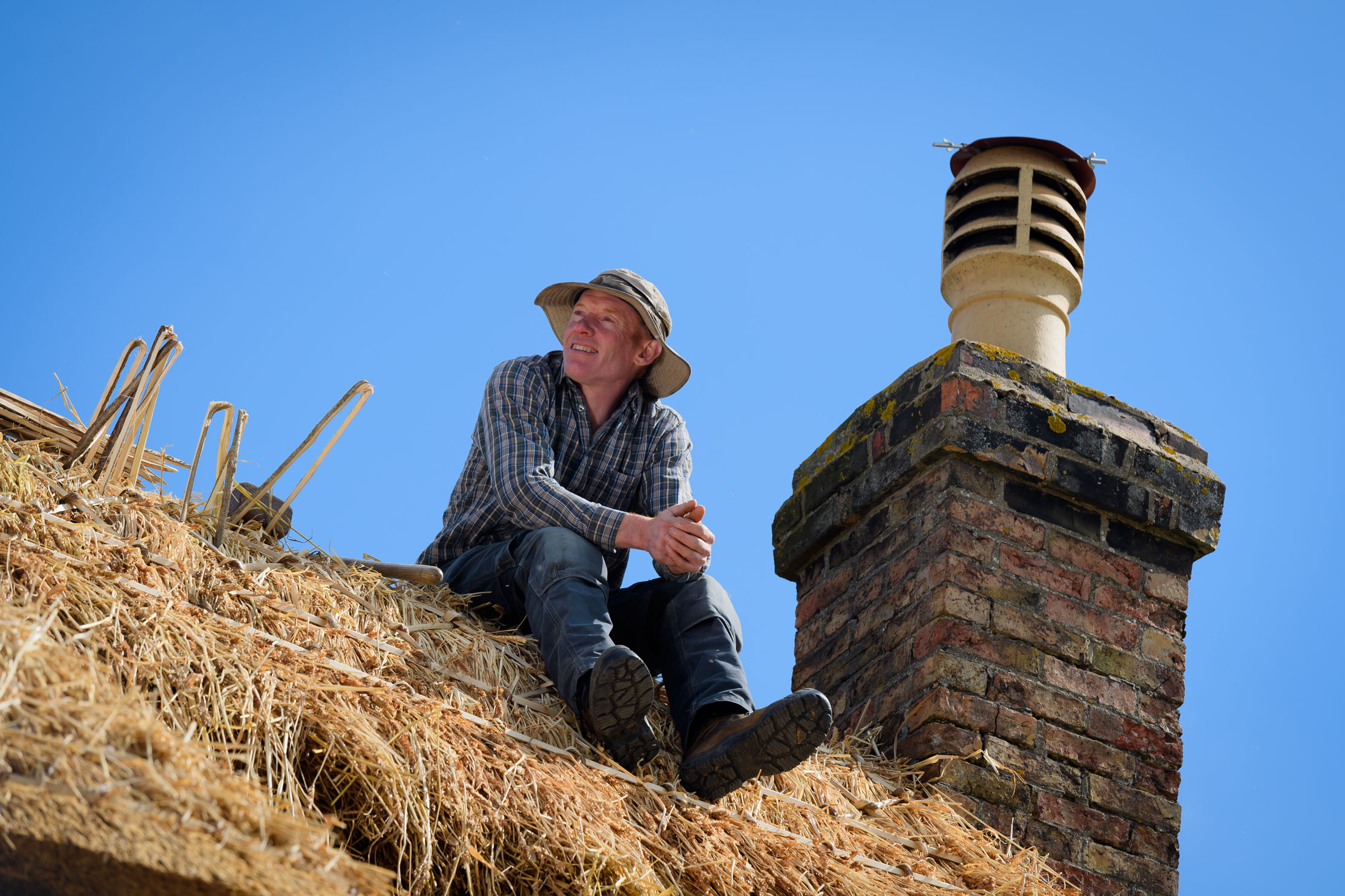

A bird’s-eye view it really is. On my way up the ladder, a wood-pigeon claps away from its perch on the apex of the roof. Earlier this morning, I watched as a grey heron lumbered awkwardly overhead as Stuart Dodson began his work, quietly, methodically, rhythmically.
It’s a truly ancient rural craft that Stuart is practising on this bright and chilly spring morning. From his eyrie, he can see across the village of Perry in Cambridgeshire. Jackdaws chack and cavort in neighbouring chimney pots, cyclists whirr past without looking up. They don’t even realise he’s there, as Stuart’s working viewpoint is a secret window not available to the rest of us. He’s a lifelong thatcher.
This man is up a ladder, or some scaffolding, for most of the daylight hours throughout most months of the year. Cold, wind and rain are his foes, but they don’t necessarily stop him. He has a diary of work for this calendar year and beyond. In his undemonstrative, timeless manner, he will continue to thatch roofs as his father and grand-father did before him, using the techniques and tools they left as their legacy.
‘I could have done something else, I suppose,’ he grins during a brief coffee break back on terra firma. ‘It wasn’t like I was forced into it, but it’s what I found myself wanting to do and learning about. It just seemed like a natural progression.’
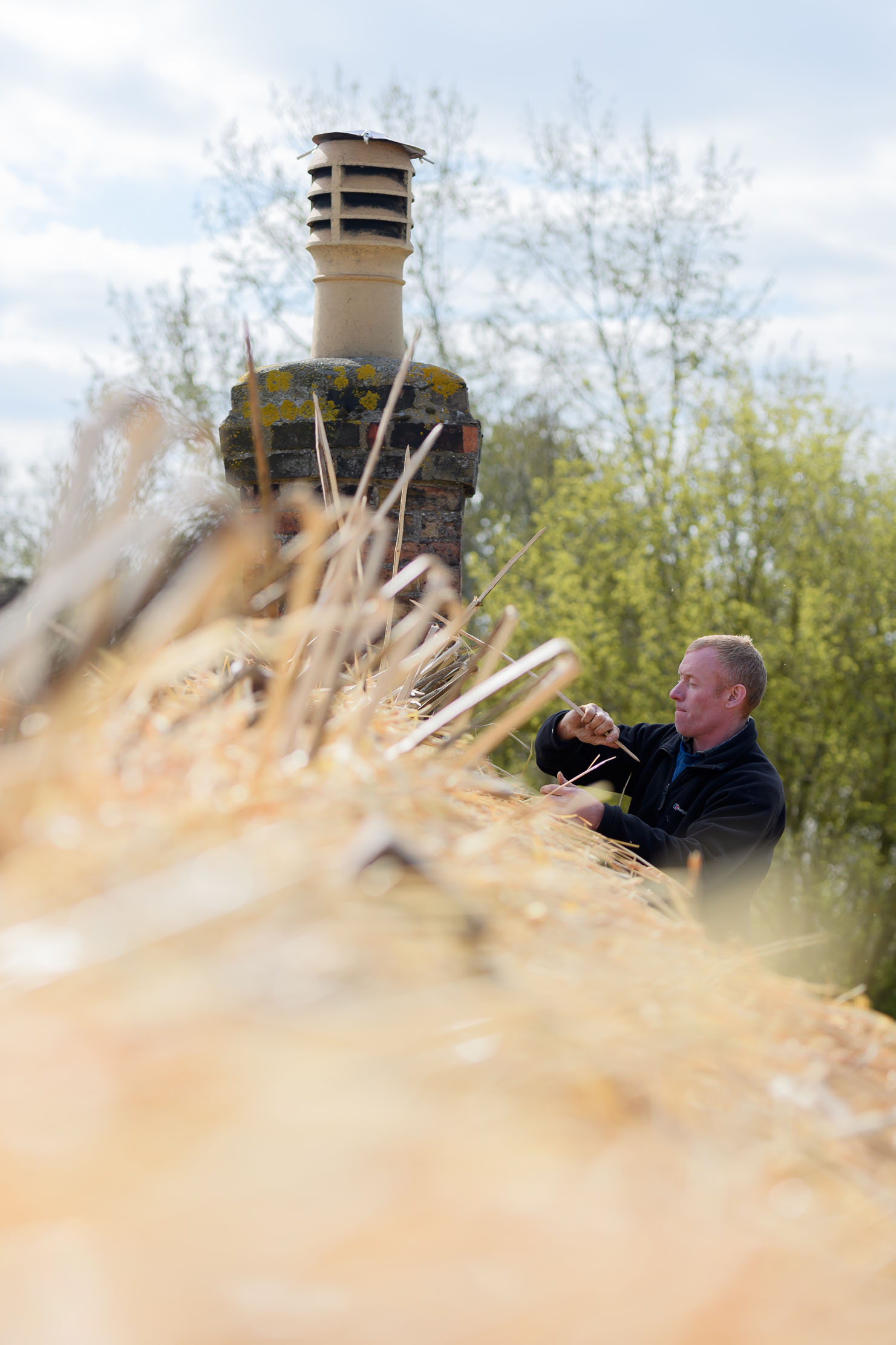
Stuart’s father, Malcolm, was something of a regional thatching legend, living a life from a bygone age. He could navigate the towns and villages for miles around his Cambridgeshire home by the houses he’d thatched over the decades. He was up early each morning to see his workmen as they came in, right up to the day before he died in 2011. Today, Stuart and his brothers, Steven and Ali, continue the family business.
The UK has more thatched homes than any other European country and, although the art and aesthetic pleasure of a thatch done well remains undimmed, today’s thatcher and his supplier of raw materials face headaches their forebears wouldn’t even have considered.
Richard Starling is a reed cutter who lives a short distance from the reedbeds that have provided his living. Using a small boat and unobtrusive cutting machinery, he trims reeds from the waterline at their optimum strength and length and bundles them to be sold and used by the region’s traditional thatchers.
Exquisite houses, the beauty of Nature, and how to get the most from your life, straight to your inbox.
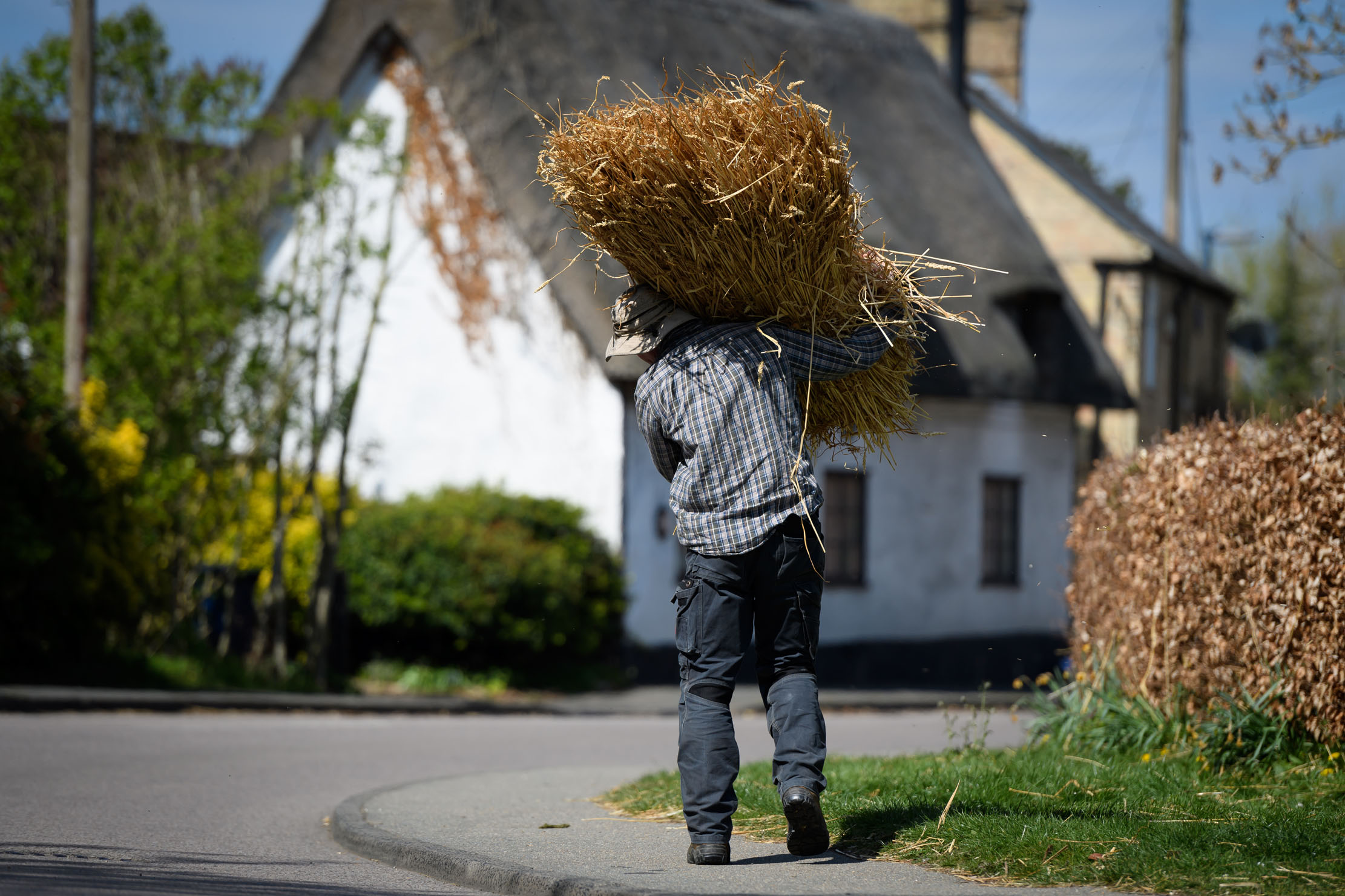
As part of his agreement to do so, he’s responsible for the upkeep of the reedbeds of Martham Broad; he knows where the bittern hides and the marsh harrier nests. He monitors the water as it rises and falls and, in cutting the reeds when he does, every two years or so, he encourages new growth and stops reed choking the waters. His is a keen and knowledgeable eye on the ground.
Except, these days, he’s legally allowed to cut only a tiny proportion of his reeds. It’s not enough to serve his lifelong clients of local thatchers. A damningly high percentage of the UK’s thatching material is now imported from Europe and China, with the colossal carbon footprint and loss of potential local jobs that results.
‘I’ve been doing this a long time and we really need to look at it with some common sense,’ Richard explains in between rain showers, which keep him under cover.

‘It used to be local people creating materials that provided jobs and shelter for more local people, yet, at the moment, we seem to be getting it all wrong. Why would anyone want to become a thatcher these days?
‘It’s a life of learning and, at first, it’s poorly paid. Where are these apprentices supposed to live while they learn? They can’t afford to live in pretty little villages, where the houses fetch massive prices.
‘Martham and places like it aren’t Yellowstone Park; they need constant managing. Just leaving it to Nature isn’t an option. The waters would dry up and the whole area would simply become scrubland. We need to find a way to keep traditional rural crafts relevant or they will simply slip away.’
The Prince’s Countryside Fund is in agreement — thatching is one of the rural jobs it seeks to protect and promote. ‘Through our rural-grants programme, the fund has supported the future of thatching by training the next generation of sedge- and reed-cutters,’ says spokesperson Ellie Jesson. ‘Our three-year project with BRASCA [Broads Reed and Sedge Cutters Association] has provided essential training to 20 young people and new entrants into this industry.’
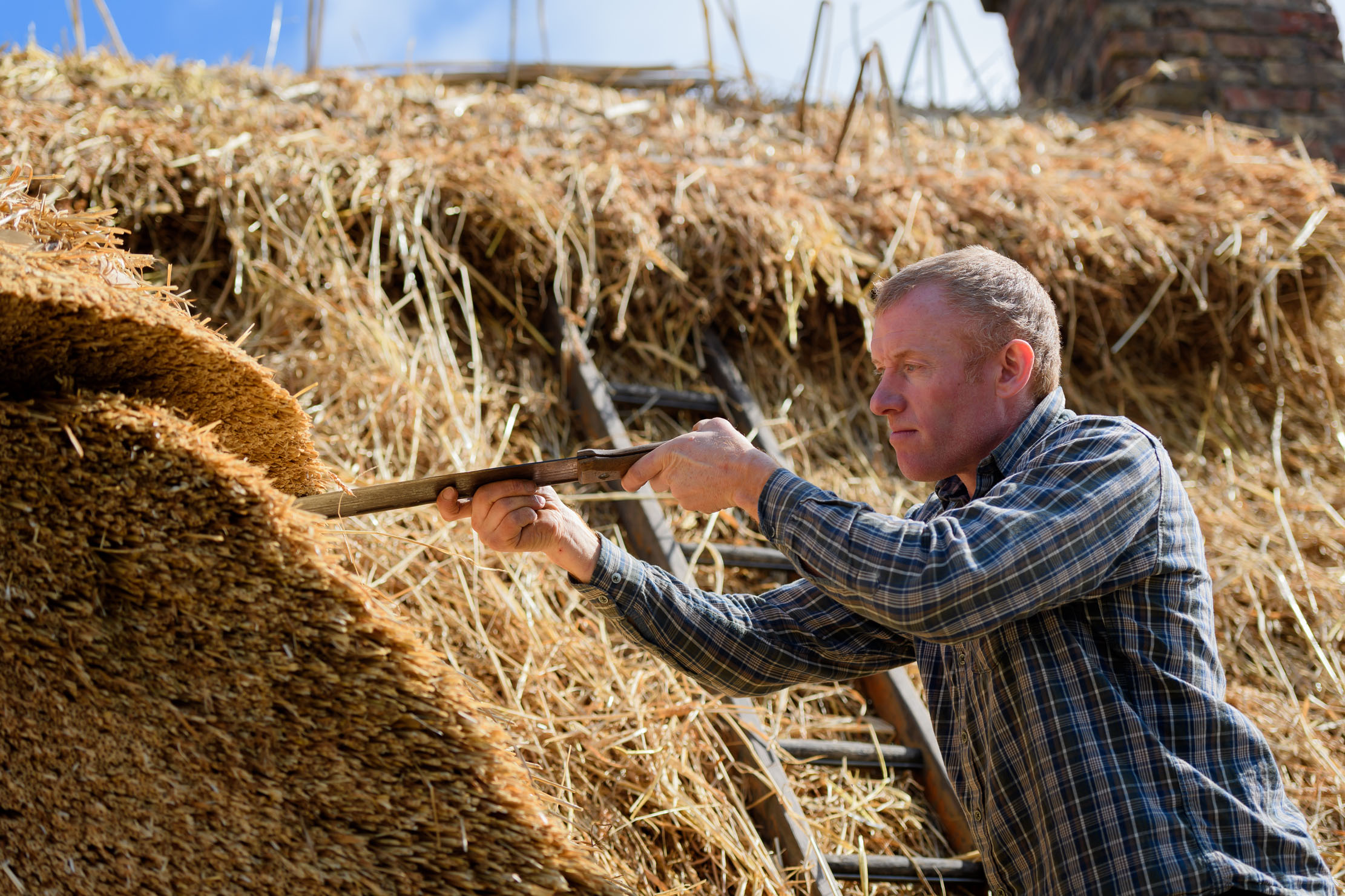
In the years to come, climate change will affect how they do their job. ‘Traditional thatch offers a very hostile environment for micro-organisms to grow in,’ says Andrew Raffle, chairman of the National Society of Master Thatchers.
‘In the past, hot, dry summers and cold, snowy winters controlled the speed of decay by keeping the thatch dry. Prolonged heavy rain, such as we’ve seen in recent years, has encouraged moss and algae and warmer winters have compounded this. Effectively, this shortens the lifespan of the thatch.’
There was a time when thatching your roof was the cheapest alternative available. That’s now flipped on its head. Re-thatching an entire cottage can cost upwards of £30,000 and, although it may be written in local law that you’re not allowed to replace thatch with other materials, that means only the affluent can afford to do it properly.
The alternative is corner-cutting and employing ‘outside’ contractors, who may lack the necessary experience and attention to detail required for a grade-A job. ‘We do get a lot of calls to come and repair a thatch that’s been patched up poorly,’ muses Stuart. ‘If you want it done properly, it takes time and money and there’s no way round that.’
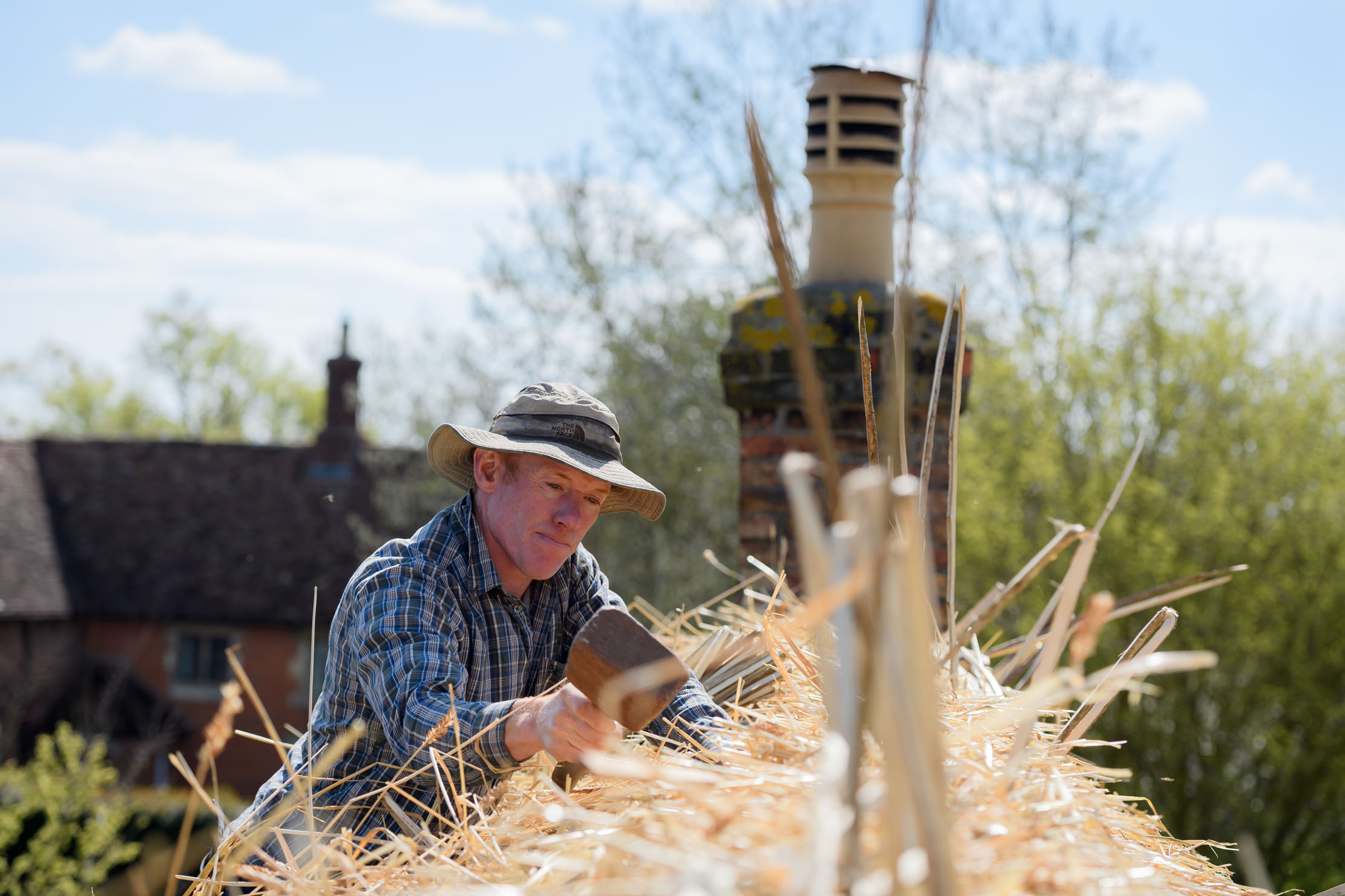
I climb up beside him on the roof, using a hooked ladder and leaning in against the thick bed of straw beneath us. Stuart and his workers are as nimble as mountain goats, tripping up and down ladders with tools and armfuls of thatching as if they were mending a fence in the garden.
It takes some getting used to, clambering about at roof pitch. A gust of wind feels malevolent and even a stout, well-secured wooden ladder feels somehow flimsy underfoot.
However, it’s not hard to see the attraction of the job, particularly on a sunny day.
The smell of fresh straw is intoxicating and there is something transcendental about creating and curating the thatch from something that resembles a bad hair day to a neat and pretty stretch of roof or dormer.
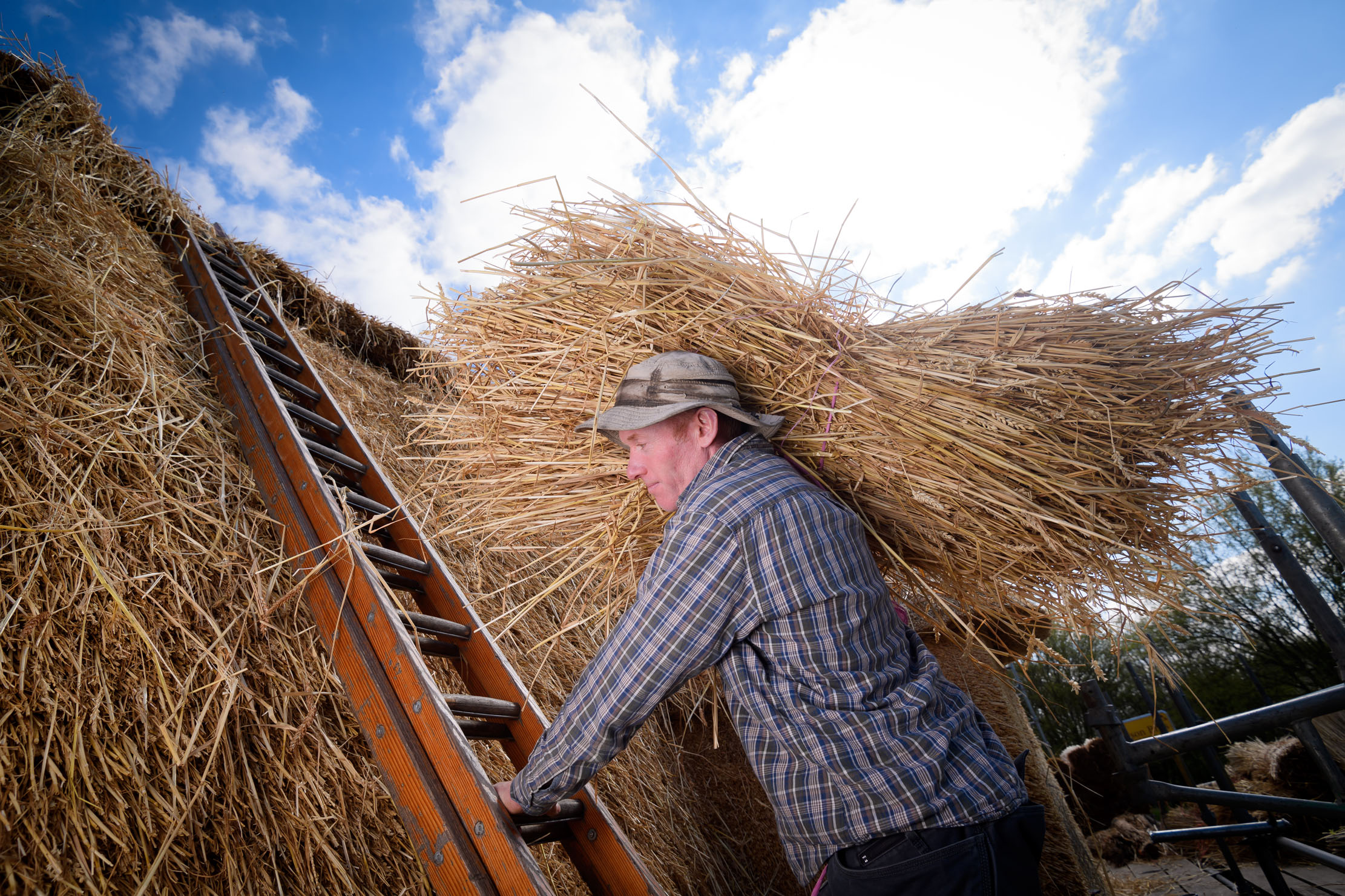
Stuart and his fellow thatchers and joiners have been working here for a month or so, on and off; the job is nearly finished. Of course, he makes it look easy, entirely at home in his flowerpot hat, tapping in spars, short twists of hazel that secure the thatch in place.
In a scene that feels as if it should be sepia-tinted, he later descends to grab more straw. He rounds a bend in the road, his face obscured by the great shimmering stook slung over one shoulder. Dust motes dance and play in the sunlight in his wake and he begins to climb.
His palms are rough and calloused and his knees give him gyp after a lifetime of standing on draughty ladders, but there’s nowhere else he’d rather be and there’s a sense today that there’s nowhere else he should be. This is the thatcher’s domain.
Tomorrow, he’ll be somewhere else, up another ladder, combing another untidy hairdo and patiently creating another picture-postcard snapshot of British rural life.
Dodson Bros Thatchers — www.dodsonbrosthatchers.co.uk; National Society of Master Thatchers — www.nsmtltd.co.uk
The tools of the trade
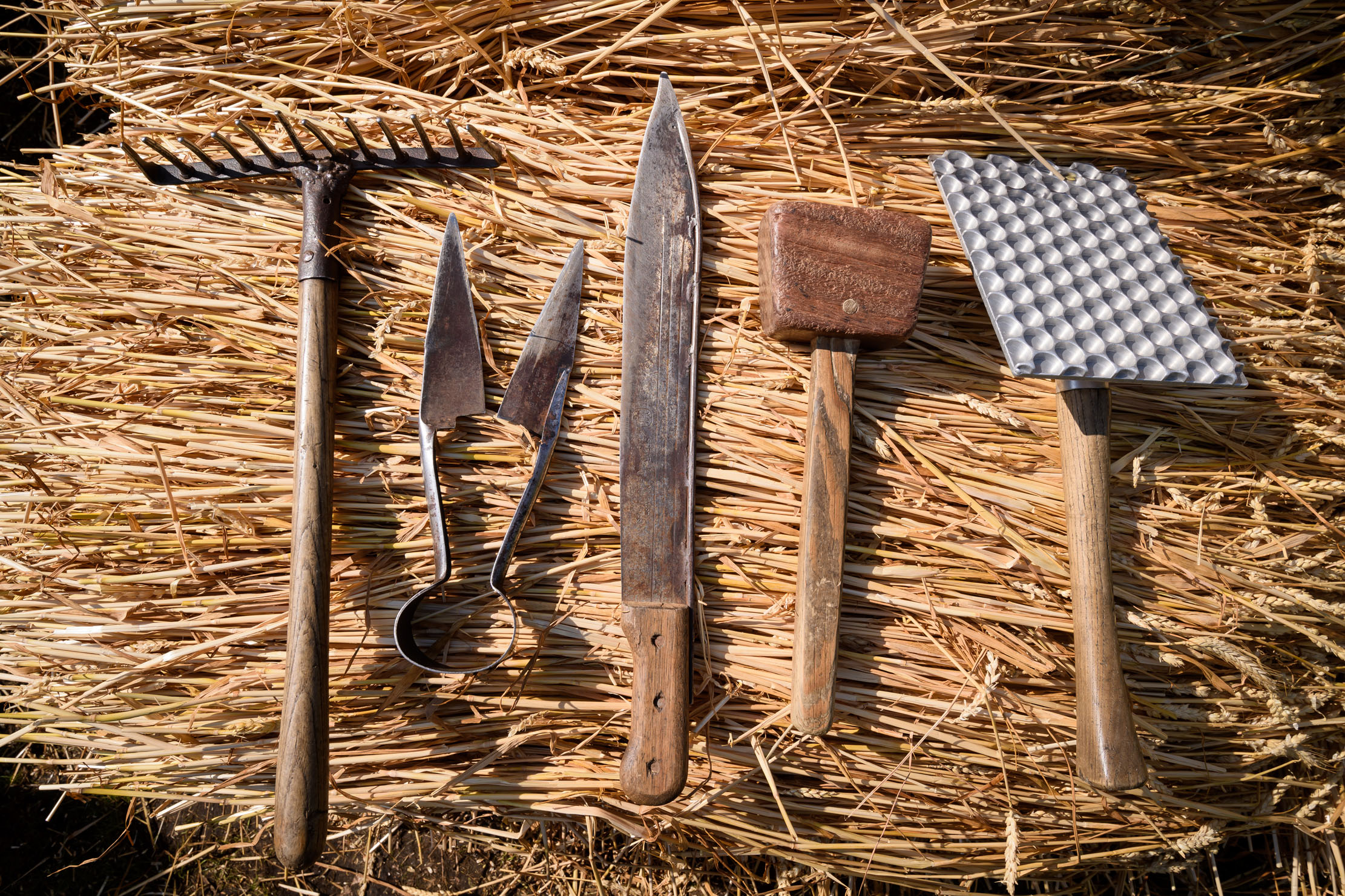
A thatcher’s tools are generally small, often homemade and passed down through generations, their ancient wooden handles worn and silky with use.
- A hammer is traditionally used to fix iron hooks from a local blacksmith into the rafters to secure horizontal sways
- A knife is used to cut the string holding bundles of straw or reed together
- A legget helps dress the material into place
- The ridge work is fastened in place by split hazel spars
- A set pin measures the depth of thatch required
- Shears are used to trim and cut bundles and eaves
- The thatcher also requires kneelers — knee pads to protect the joints
Variations on a theme
The majority of thatching materials used today are cereal straw, water reeds and sedge grass. Regional variations include marram grass on the traditional houses of the Scottish isles and flax, barrel shavings and heather, which can sometimes be found on roofs in Yorkshire and Wales, as well as on traditional Scottish shooting bothies.
Thatching variations can broadly be split into five geological areas: Highland, Northern, Eastern, Southern and South-Western. Each offers its eccentricities, linked with people, their history and the prevailing local micro-climate.

10 picture-perfect thatched cottages which are immaculate inside and out
Buying a thatched cottage needn't mean walking into a nightmare of work to do – these delightful places are all
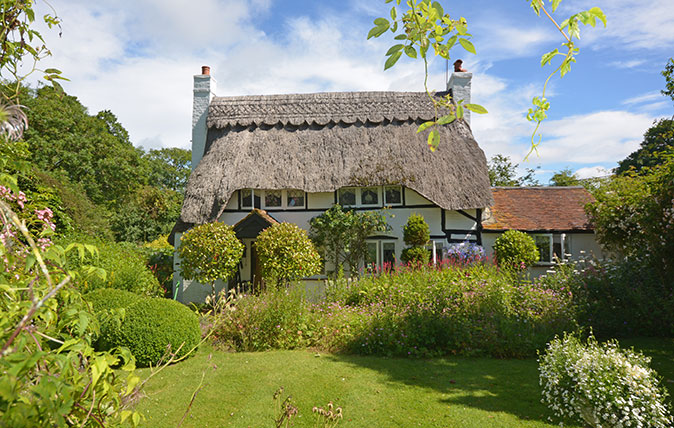
Credit: Woolley and Wallis
A perfect thatched cottage with a fairytale garden, pool and room for horses
A dreamy little cottage has come up for sale within the New Forest National Park.

Ten gorgeous thatched cottages for sale across Britain, from under £500,000
Our pick of the best thatched cottages and houses for sale today across England.
Country Life is unlike any other magazine: the only glossy weekly on the newsstand and the only magazine that has been guest-edited by His Majesty The King not once, but twice. It is a celebration of modern rural life and all its diverse joys and pleasures — that was first published in Queen Victoria's Diamond Jubilee year. Our eclectic mixture of witty and informative content — from the most up-to-date property news and commentary and a coveted glimpse inside some of the UK's best houses and gardens, to gardening, the arts and interior design, written by experts in their field — still cannot be found in print or online, anywhere else.
-
 Child stars, Prince and nursery rhymes: It's the Country Life Quiz of the Day, December 5, 2025
Child stars, Prince and nursery rhymes: It's the Country Life Quiz of the Day, December 5, 2025It's all in today's quiz.
-
 ‘Calf’s brains have a bland, gentle richness that soothes and cossets': Tom Parker Bowles on the joys of eating offal
‘Calf’s brains have a bland, gentle richness that soothes and cossets': Tom Parker Bowles on the joys of eating offalEating offal it is more sinned against than sinning, but it offers the ultimate in magnificent, fully immersive eating.
